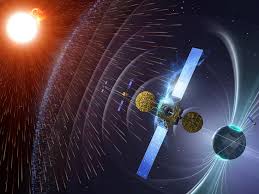
Cosmic radiation is a fascinating and critical subject in both astrophysics and space exploration. It refers to the high-energy particles that originate from outer space and travel across the universe, including our solar system and Earth’s atmosphere. These energetic particles play a significant role in understanding the universe and pose challenges to human space exploration. This article delves into cosmic radiation, its origins, effects, and implications for life on Earth and beyond.
What is Cosmic Radiation?
Cosmic radiation consists of high-energy particles, primarily protons and atomic nuclei, that travel at nearly the speed of light through space. It originates from various sources throughout the universe, including our own Sun and distant galaxies. These particles can penetrate matter, including the Earth’s atmosphere, and can affect both living organisms and technological systems.
Sources of Cosmic Radiation
Cosmic radiation comes from three primary sources:Galactic Cosmic Rays (GCRs): These are high-energy particles that originate from outside our solar system, believed to come from supernova explosions and other energetic astrophysical phenomena in our galaxy and beyond.
Solar Cosmic Rays: Emitted by the Sun, these are lower-energy particles compared to GCRs but can increase significantly during solar storms and flares.Terrestrial Radiation: The Earth itself, particularly through natural radioactive decay processes in the crust, emits some radiation, although it is not considered cosmic in nature.
Types of Cosmic Radiation
There are two main types of cosmic radiation:Primary Cosmic Rays: These are high-energy particles that enter the Earth’s atmosphere from outer space. They consist mostly of protons (about 90%), helium nuclei (alpha particles), and a small percentage of heavier nuclei and electrons.Secondary Cosmic Rays: When primary cosmic rays interact with atoms and molecules in the Earth’s atmosphere, they produce secondary particles, such as muons, pions, and gamma rays, which can reach the Earth’s surface.
Effects of Cosmic Radiation on Humans
Cosmic radiation poses risks to human health, particularly for astronauts in space. Exposure to high levels of cosmic radiation can lead to:DNA Damage: High-energy particles can penetrate living cells, causing mutations or damage to DNA, which increases the risk of cancer.Radiation Sickness: Prolonged exposure to elevated levels of cosmic radiation can cause acute radiation sickness, characterized by nausea, fatigue, and potential long-term health effects.Central Nervous System Effects: High doses of cosmic radiation may impair cognitive functions and increase the risk of neurodegenerative diseases.Impact on Astronauts: Space missions, particularly those beyond low Earth orbit (such as missions to Mars), expose astronauts to higher levels of cosmic radiation, posing a significant challenge for long-term space travel.
Cosmic Radiation and Technology
Cosmic radiation can interfere with electronic devices, particularly in space or high-altitude flights. Some of the major technological effects include:Satellite Malfunctions: High-energy particles can disrupt the functionality of satellites by causing electrical failures or data corruption.
Aviation Risks: Aircraft flying at high altitudes, particularly near the poles, are exposed to increased levels of cosmic radiation, which can affect both crew and passengers as well as onboard electronics.Radiation Shielding: Engineers design spacecraft and electronic components to withstand cosmic radiation, using shielding materials to protect sensitive equipment and human passengers from its effects.
The Earth’s Atmosphere and Magnetic Field as Protection
Earth is largely protected from the harmful effects of cosmic radiation by its atmosphere and magnetic field. The Earth’s magnetosphere acts as a shield, deflecting many of the high-energy particles away from the planet’s surface. Additionally, the thick layer of the atmosphere absorbs much of the radiation, with only a small fraction reaching the ground.
Implications for Space Exploration
One of the biggest challenges in space exploration, particularly for missions beyond Earth’s orbit, is managing the risks posed by cosmic radiation. Future missions to Mars or long-duration stays on the Moon require advanced shielding technologies and medical countermeasures to mitigate radiation exposure.Lunar and Mars Missions: Since the Moon and Mars lack a protective atmosphere and magnetic field, astronauts will be exposed to much higher levels of radiation than on Earth. Ensuring the safety of crew members on these missions will involve developing habitats with effective radiation shielding.Long-term Solutions: Research is ongoing to find biological and technological solutions to protect astronauts from cosmic radiation, such as advanced materials for shielding, pharmaceuticals to mitigate radiation effects, and better understanding of the cosmic radiation environment.
Cosmic Radiation and Climate
Cosmic rays may also have indirect effects on Earth’s climate. Some research suggests that high-energy cosmic rays can influence cloud formation, potentially affecting weather patterns. However, the exact relationship between cosmic radiation and climate is still a subject of ongoing study and debate.
Studying Cosmic Radiation
Cosmic radiation is studied through various scientific methods:Balloon and Satellite Experiments: High-altitude balloons and satellites are used to measure cosmic radiation in the upper atmosphere and in space.Space Probes: NASA, ESA, and other space agencies use space probes to study cosmic rays in interplanetary space, helping to understand their origins and behavior.Particle Accelerators: On Earth, scientists use particle accelerators to simulate cosmic rays and study their interactions with matter, aiding in the development of protective materials and technologies.
Cosmic radiation is an intriguing and complex aspect of the universe, playing a significant role in both the understanding of space phenomena and the challenges of human space exploration. While the Earth’s atmosphere and magnetic field offer significant protection, advances in technology and science are crucial for mitigating the risks of cosmic radiation, particularly as humanity embarks on longer and more ambitious space missions.Understanding and managing cosmic radiation will be key to ensuring the future of space exploration and safeguarding the health of astronauts venturing beyond our planet.
Subscribe to Follow Global Trends for daily global news.
Find Out How To Make Money As A Full Time Writer/Blogger Guide.
To Advertise, Advertise Your Affiliate Links on FollowGlobalTrends.com for Just $1 Per Link Per Month!
Related Articles
Growing mushroom houses
Moon habitat
Mycelium construction
Lunar architecture
Sustainable building materials
Space habitation
Fungal growth
Myco-architecture
Extraterrestrial construction
Lunar environment
Renewable resources
Self-repairing materials
Space exploration
Written By: Enyoghasi Ngozi pricillia
,

